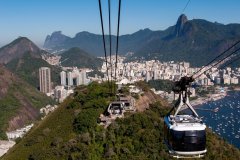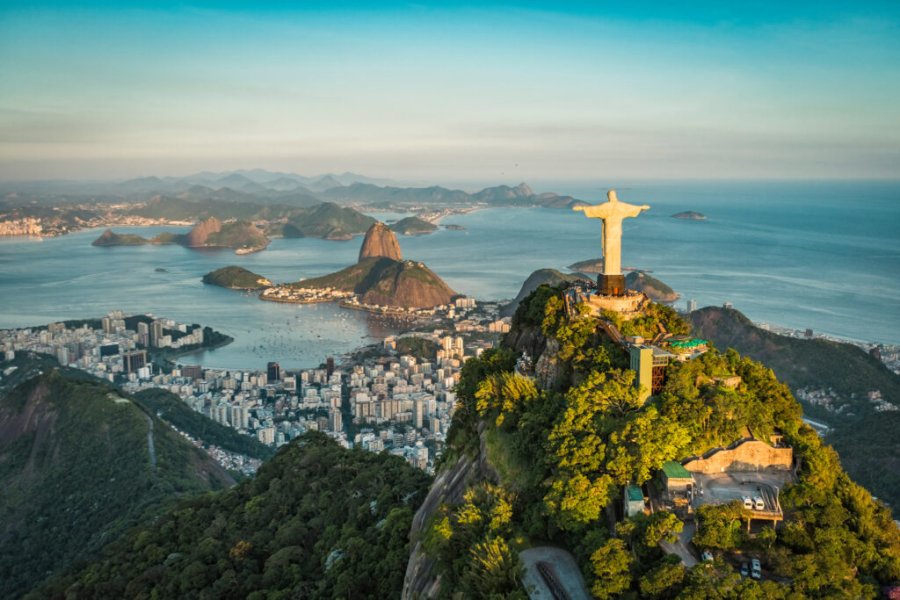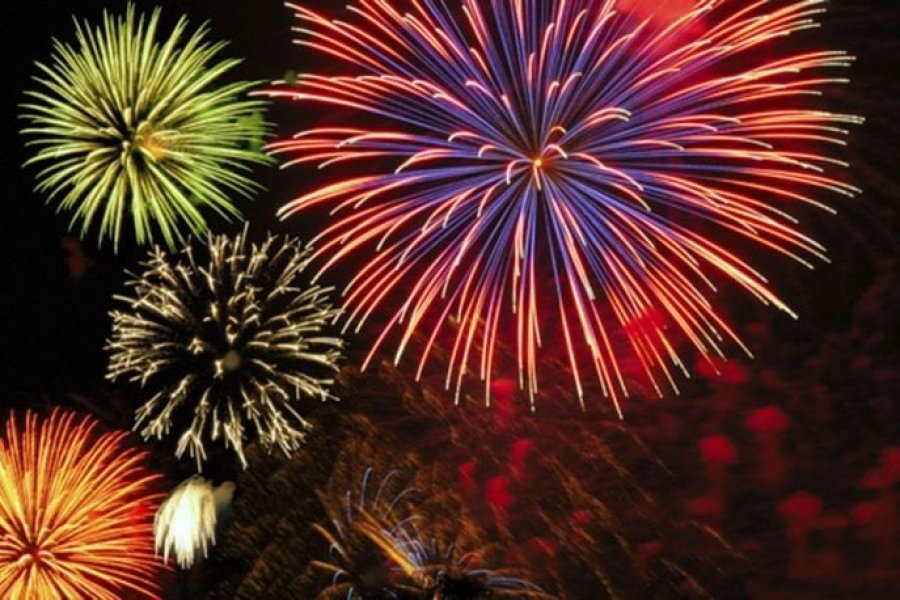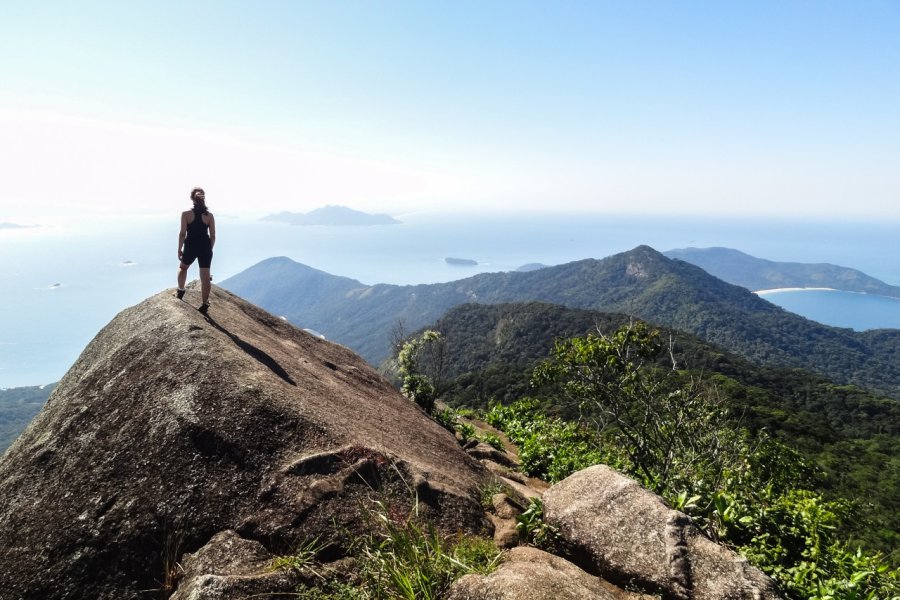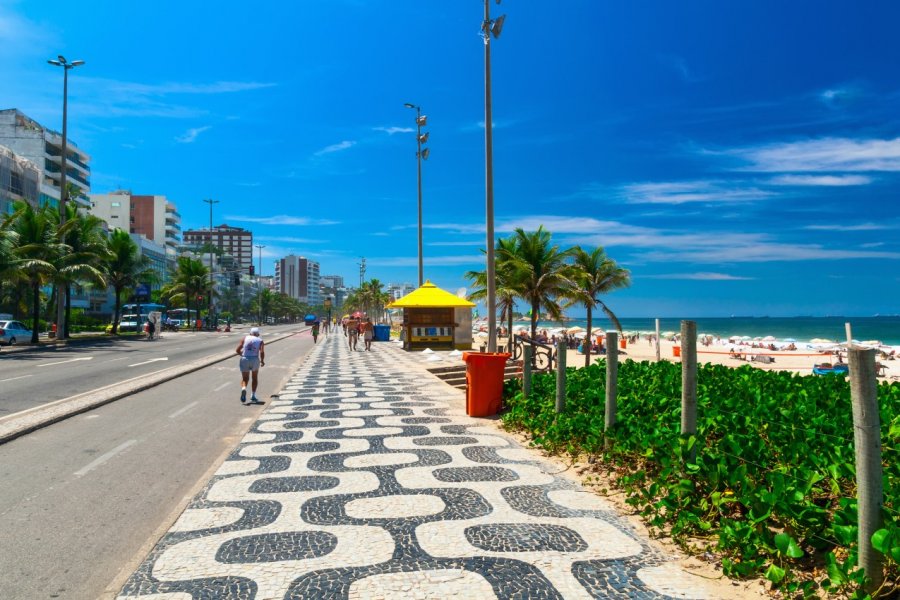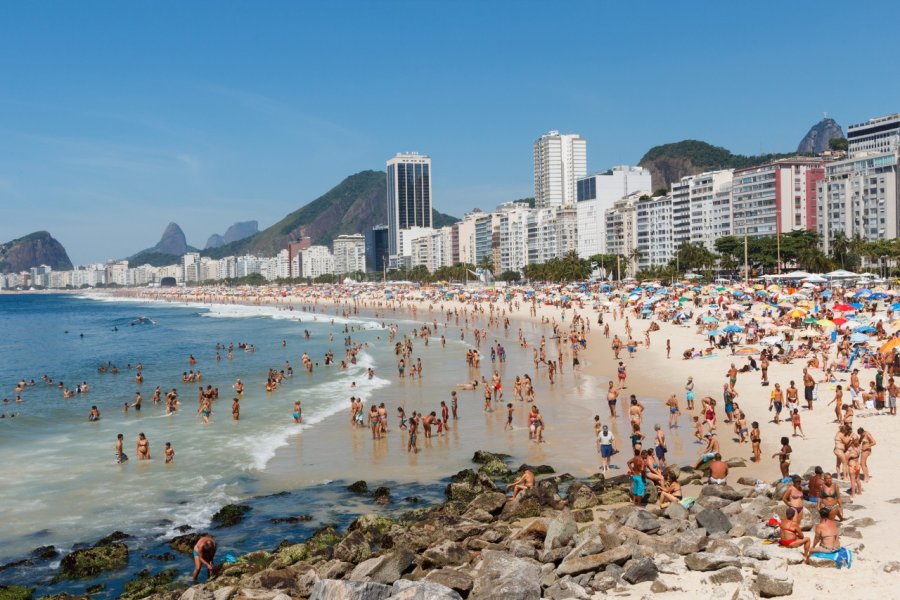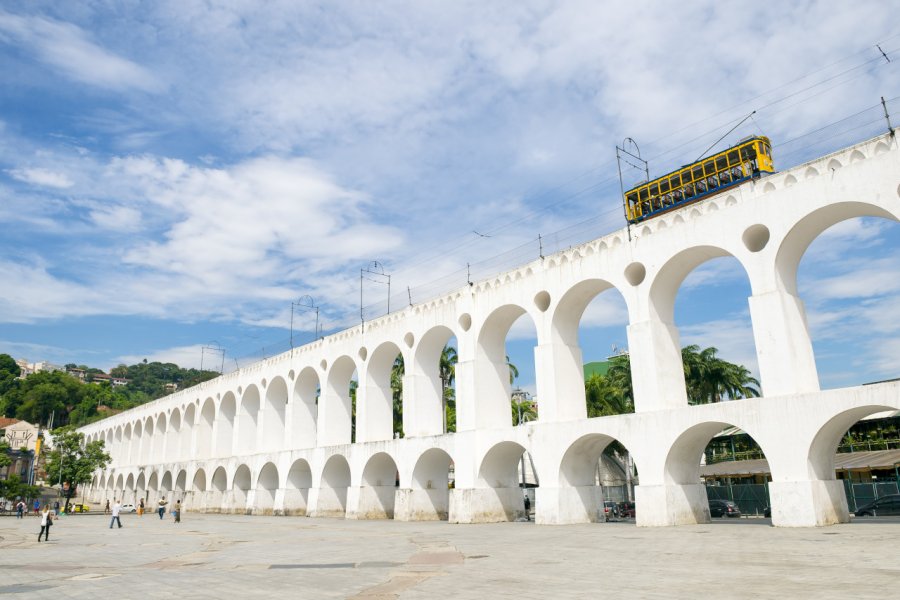Travel guide Rio De Janeiro
Traveling to Brazil without passing through Rio de Janeiro is like visiting Paris for the first time and forgetting to say hello to the Eiffel Tower. Second most populated city in the country after São Paulo, the "wonderful city" as the Cariocas, its inhabitants, affectionately call it, Rio is the undeniable tourist capital of Brazil. A fiery and feverish metropolis founded in one of the most beautiful settings, between bays, paradisiacal beaches, hills and luxuriant tropical forest under the protection of the famous statue of Christ the Redeemer up there on the Corcovado. An urban jungle that can be explored for days on end with a Rio tourist guide without feeling like you're going in circles.
Going to Rio means strolling in havaianas on the kilometers of beach of the mythical Copacabana and Ipanema, sipping a caipirinha in the bohemian and arty district of Santa Teresa, dancing the samba until the end of the night outside of the 4 days of Carnival in Lapa, it's taking a cable car ride up Sugarloaf Mountain, it's attending the great mass of soccer in the Maracana stadium where the 2014 World Cup final took place, it's hiking and bathing in the waterfalls of Tijuca National Park. It is also and above all to meet a warm and colorful population.
What to see, what to do Rio De Janeiro?
-
Book an activity
-
Customized travel
- Addresses to visit Rio De Janeiro
When to go Rio De Janeiro ?
The best time to go to Rio de Janeiro is at the beginning of the southern autumn (from mid-March to mid-May), when the heat becomes less painful, while keeping a very nice sunshine and still (relatively) long days. Of course, the summer period, from the beginning of December to the end of February, is recommended if you want to experience the Rio 40° graus (Rio 40 °C!) and if you don't want to miss anything of the tourist season, whose peak takes place of course during the four days of the Carnival (February or March depending on the year). But be prepared to sweat a lot (the atmosphere is full of humidity, we are on the Tropic of Capricorn, by the sea)... and not to be alone: January and February are synonymous with large crowds on the beaches of Rio. On the other hand, avoid if possible the months of October and November, certainly the rainiest, and, if you suffer from the heat, those of July and August, where the thermometer hardly exceeds 20°C during the day and 15°C in the evening.
Weather at the moment
Suggested addresses Rio De Janeiro
Travel Rio De Janeiro
-
Find a hotel
-
Car Rental
-
International e-SIM package
-
Find a local agency
Find unique Stay Offers with our Partners
How to go Rio De Janeiro
How to go alone
There are many direct flights to Rio de Janeiro. The big event for which hundreds of thousands of foreign tourists travel is the Rio de Janeiro Carnival, the biggest party in the world! It takes place in February, but preparations intensify and the excitement gradually builds from the end of December
How to go on a tour
You will find many tour operators who specialize in Rio. They produce their own trips and are generally very good at giving advice because they know the city inside and out. Note that their rates are often a little higher than those of general agencies.
How to get around
The fastest way to get around Rio is by metro, which connects the main areas of the city and operates daily from 5am to midnight (7am-11pm on Sundays). Buses are also very practical and the network serves even the most remote areas of the city. Otherwise, there are always cabs, numerous and cheap, with a meter.
Featured articles Rio De Janeiro
Discover Rio De Janeiro
Rio is undoubtedly one of the most beautiful natural and urban sites on the planet... Its relief of morros links the ocean to the world's largest urban forest. The mountains, the sky, the sea and its inhabitants blend into a unique landscape, in a definitively sybaritic atmosphere. The city is rich in social diversity, in a space initially partitioned by the barriers formed by the morros. Tunnels through these obstacles have gradually helped the city expand towards the new urbanized areas to the south. It's the Rio à la mode. The popular Rio of the northern districts is juxtaposed with the business Rio of the CBD, the bohemian Rio of Santa Teresa, the historic Rio of Centro, the seaside Rio of Copacabana, the chic Rio of Ipanema and the poverty-stricken Rio of the favelas. History is written in palimpsest form in numerous neighborhoods, where historical strata are superimposed to form the marvelous city.
Pictures and images Rio De Janeiro
The 12 keywords Rio De Janeiro
1. Alegria
It is a word often chanted during carnival and festivals. In spite of the problems linked to poverty and the violence that comes with it, it is indeed a feeling of permanent happiness that seems to inhabit the Brazilian soul. A few glasses of beer or caipirinha or a few chords of samba are enough to make this nature resurface.
2. Native Americans

The chief Raoni made the world discover the unenviable fate of the first inhabitants of Brazil: the Amerindians. Today, there are 305 indigenous peoples with 900,000 inhabitants, compared to 5 million in 1500. The reserves represent 13% of the Brazilian territory, and 1.5% outside the Amazon. Unfortunately, their daily life is often miserable.
3. Baroque art
In Minas, in particular, the influence of Baroque art cannot be ignored. The sculptures and paintings in the churches, sometimes the fruit of the skillful hands of sculptor Aleijadinho or painter Manuel Ataíde, are works of art that alone justify a visit to the colonial towns of the states of Rio and Minas.
4. Cachaça
Among the discoveries not to be missed in Rio and Minas, the epicurean traveler will discover a local alcohol which is declined under a "festive" form, the caipirinha. This is cachaça, a Brazilian rum with multiple aromas. Less known than rum, this alcohol is also obtained by distilling sugar cane in "stills".
5. Coffee

Another element associated with Brazil, the country of coffee. The plant at the base of this universal beverage is not native to Brazil, but it has contributed to the design of certain regions during the coffee cycle, in the interior of the states of Rio and Minas and to the election of many statesmen. The cafezinho is an institution in Brazil.
6. Favelas
Indissociable from Brazil's urbanization and social segregation, favelas are notorious for being "grey zones" where the state is absent. For over a hundred years in Rio, favelas have marked every city in the country. Violence is certainly present, but they are also social laboratories and dynamic territories.
7. Feijoada

This local dish is now part of the Brazilian culinary heritage. It is a typical popular dish made of vegetables (black beans) and non-noble pieces of meat, such as pig's ears. In Rio and elsewhere, restaurants usually offer it on Saturdays and it is an opportunity for friends to meet and exchange.
8. Futebol

It is a sport that is inseparable from Brazil. Some speak of a religion, whose temple would be Maracanã. During World Cup tournaments, a whole nation is united behind the Auriverde team. The rest of the year, it is the local or regional derbies of the Brasileirão, such as Flu-Fla, that monopolize the discussions and passions.
9. Kilo and bufê
Why these words here? Very quickly, the traveler will see in some restaurants prices displayed by the kilo. A Brazilian specificity, you can fill your plate in self-service and have it weighed. The buffet or bufê consists of eating whatever you want for a fixed price. Very popular, you can find cheap kilos and very chic ones.
10. Religion
Brazil is a mystical country where religion is prevalent in every place and environment. Christianity, but also animism and Afro-Brazilian cults have shaped the soul of the country in a subtle syncretism. The spiritual accompanies the difficult daily life. Here, as in Morocco, when we plan to meet again, we add "se Deus queser".
11. Samba
The samba (O samba, masculine word for Brazilians) is the expression of the Brazilian soul, as the tango is the expression of the Argentine soul. Formal and informal places are dedicated to it in Rio and elsewhere. The Pedra do Sal, the Samba do Trabalhador, the Lapa clubs or small groups on street corners honor this musical art.
12. Violence
Violence is inseparable from Brazilian society. It is undoubtedly the result of violent colonization against the indigenous people, of slavery and of current inequalities. The military regime from 1964 to 1986 generalized and legitimized it. It escapes the control of the recovered democracy. We live with it while trying to preserve ourselves from it.
You are from here, if...
You quickly find out if you have to enter the bus from the front or the back to avoid looking like a gringo or worse, a Paulista.
You take the bag of a person who is standing in the bus, when you are sitting
You have chosen your team in the Carioca Derby (Flamengo, Botafogo, Fluminense or Vasco de Gama)
You have a regular boteco or botequim (neighborhood bar) that you go to at the end of the day
You go out with a carioca look (t-shirt, and chinelas, local name for flip-flops)
You go to your "posto", a stretch of beach around an aid station that has particular characteristics (trendy, gay, young...), between Copacabana and Leblon. You bring the minimum required on the beach and you ask your neighbor to watch your belongings when you go swimming.
You don't hail cabs on the street, especially in the evening, but you take them at the head of the station or you have them called by the pousada or the restaurant.

